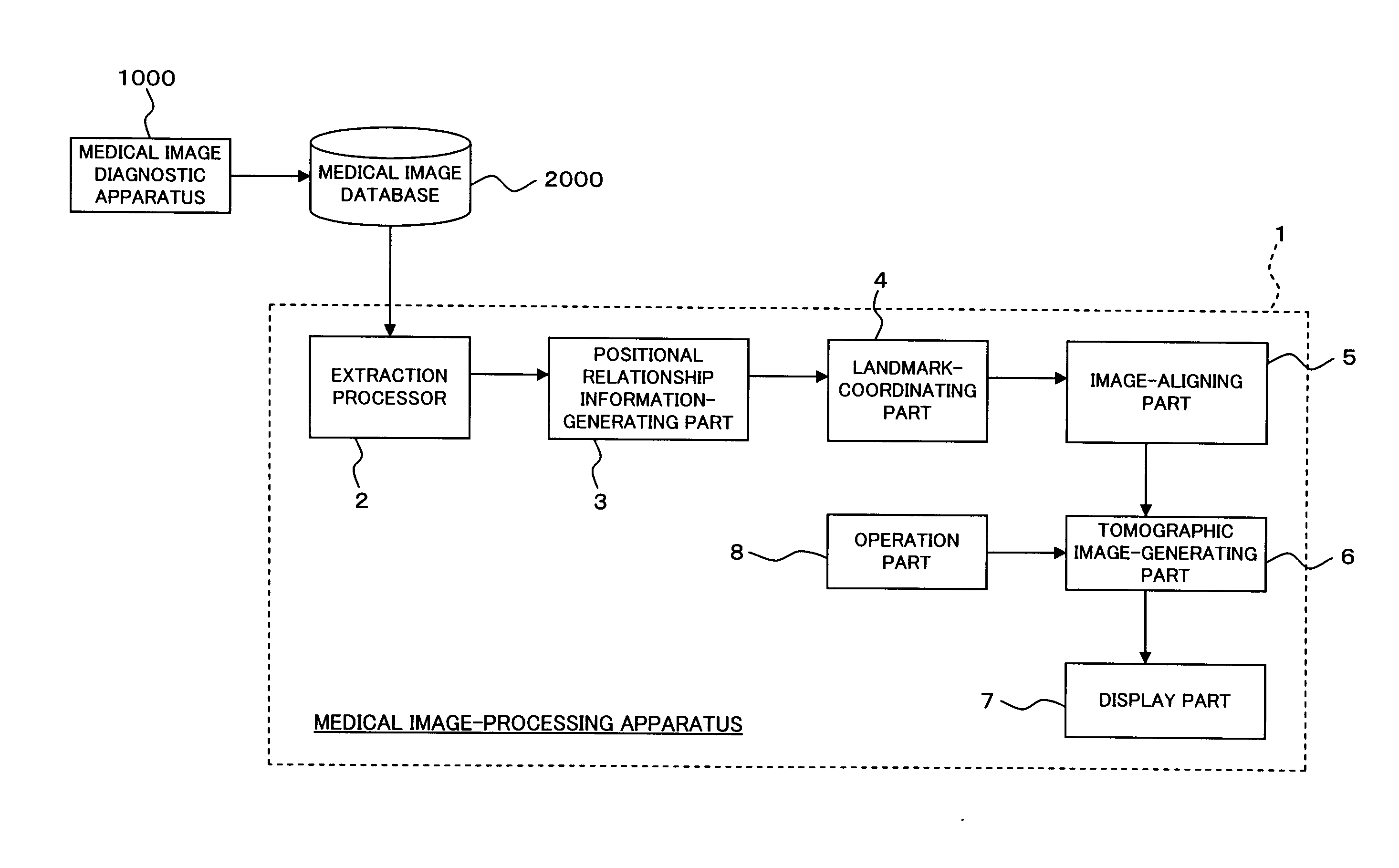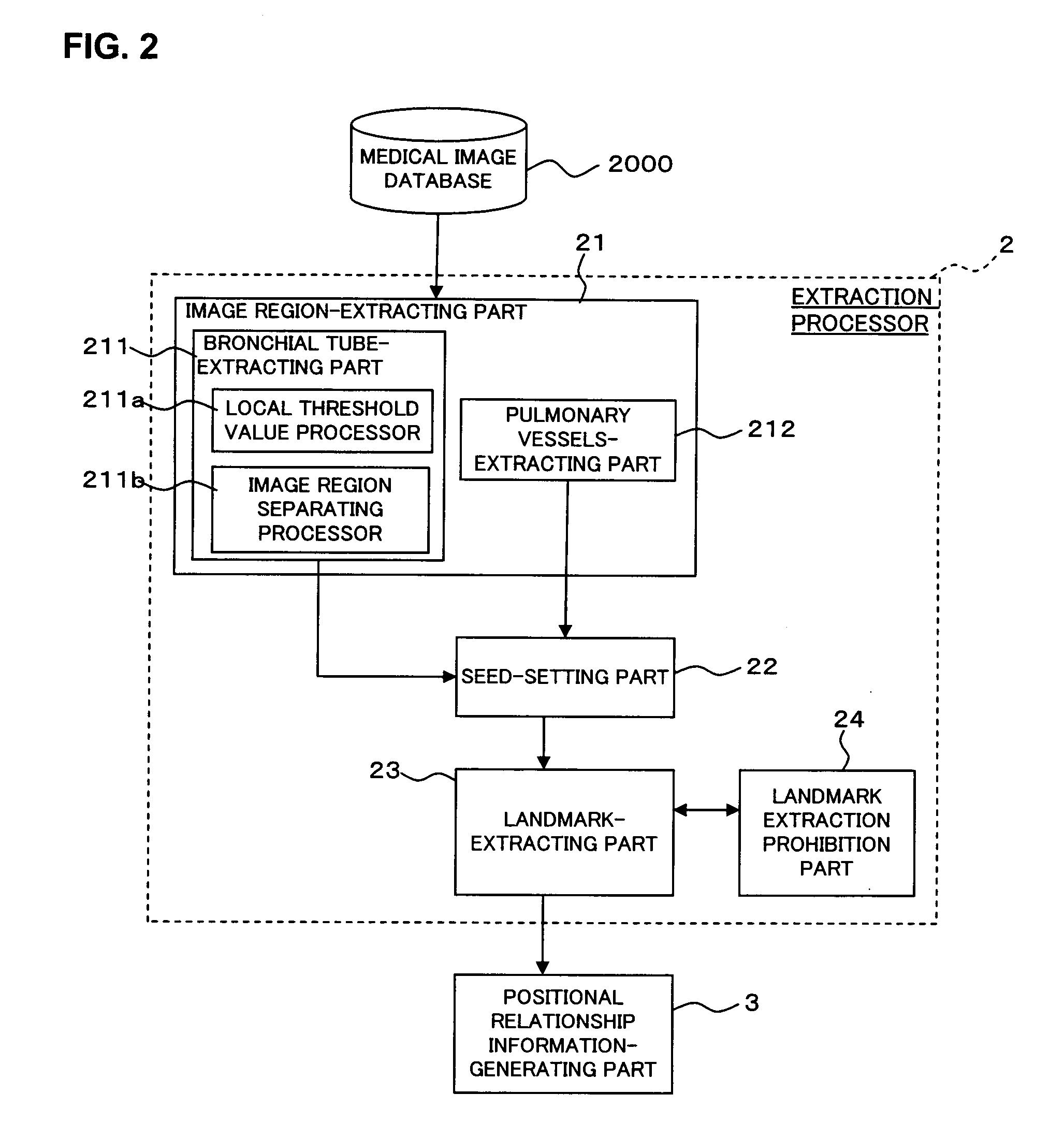Medical image-processing apparatus and a method for processing medical images
- Summary
- Abstract
- Description
- Claims
- Application Information
AI Technical Summary
Benefits of technology
Problems solved by technology
Method used
Image
Examples
specific example 1
[0145]The first specific example calculates the residual error when performing the coordinate transformation of landmarks based on the transformation parameter obtained by the transformation parameter-calculating part 51, and then removes the landmarks with the residual error that is a predetermined value or more, and calculates the transformation parameter again by using only the remaining landmarks.
[0146]An example of this process will be described in detail. The transformation parameter correction part 52 transforms the coordinate (ri, rj, rk) of each landmark r of the reference image to the coordinate (ti′, tj′, tk′) of the target coordinate system by using the transformation parameter obtained by the transformation parameter-calculating part 51.
[0147]Next is to calculate the difference Δ(r, t) between the coordinate (ti′, tj′, tk′) obtained by the transformation and the coordinate (ti, tj, tk) of the target coordinate system of the landmark t of the target image that has been c...
specific example 2
[0151]The second specific example corrects the transformation parameter by performing weighting on each of the landmark pairs using a weighted function (objective function) according to the difference Δ(r, t) that can be obtained similarly to the specific example 1.
[0152]FIG. 5 shows an example of the weighted function. The weighted function F shown in the same diagram is a nonlinear function, in which the value of gradient (slope) F′(Δ(r, t)) is large when the value of difference Δ(r, t) is small (when the residual error by the transformation parameter is small), and as the value of difference Δ(r, t) becomes larger, the value of gradient F′(Δ(r, t)) becomes gradually smaller. This weighted function F has, for example, gradient F′(Δ(r, t))=1 when the value of difference Δ(r, t) is small.
[0153]The transformation parameter correction part 52 is a non-linear optimization method using an iterative solution technique based on the weighted function F. Although this process uses the itera...
specific example 3
[0156]The third specific example is a modified version of the specific example 2. The characteristic of this specific example is that the weighted function (objective function) is modified in the iterating process of the non-linear optimization method using the iterative solution technique described in the specific example 2.
[0157]FIG. 6 shows an example of weighted function used in this specific example. The same diagram indicates two weighted functions F1 and F2. The weighted function F1 is used during the early phase of iterating process of the non-linear optimization method using iterative solution technique, and the weighted function F2 is used during the later phase of iterating process. The weighted function F2 is set in a way that the gradient F′Δ(r, t) becomes gradually smaller with a value of difference Δ(r, t) smaller than the weighted function F1.
[0158]The transformation parameter correction part 52 is configured to perform the process using the weighted function F1 unti...
PUM
 Login to View More
Login to View More Abstract
Description
Claims
Application Information
 Login to View More
Login to View More - R&D
- Intellectual Property
- Life Sciences
- Materials
- Tech Scout
- Unparalleled Data Quality
- Higher Quality Content
- 60% Fewer Hallucinations
Browse by: Latest US Patents, China's latest patents, Technical Efficacy Thesaurus, Application Domain, Technology Topic, Popular Technical Reports.
© 2025 PatSnap. All rights reserved.Legal|Privacy policy|Modern Slavery Act Transparency Statement|Sitemap|About US| Contact US: help@patsnap.com



